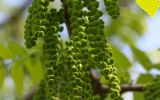How Many Types of Walnut Trees Are There?
Walnuts are deciduous trees native to regions including North and South America, southern Europe, Asia, and the West Indies. These species vary significantly in size, habitat, and the quality of nuts and timber they produce, catering to both agricultural and ornamental demands. In this article, we will explore the diverse world of walnut trees, delving into the specifics of the approximately 20 species within the genus Juglans.
There are approximately 20 species of walnut trees (genus Juglans), which include the well-known English walnut (Juglans regia) and the black walnut (Juglans nigra). These species vary widely in size, fruit type, and wood characteristics, and are native to different parts of the world.
Beyond the well-known English and black walnuts, the genus Juglans includes a variety of other species, such as the Japanese walnut, Butternut tree, and the Manchurian walnut. Let's dig into the world of walnuts and discover the unique differences of each species!
Summary
- Walnut trees exhibit a wide range of adaptability to various climates, from drought-resistant species in California to those thriving in high-altitude Andean regions and the diverse climates of Central America and the Caribbean.
- Certain species, such as Juglans regia (English walnut), are widely cultivated for their nuts, while others like Juglans nigra (Black walnut) are highly valued for their durable, dark-colored wood.
- Some species, like Juglans guatemalensis, are noted for their vulnerability to extinction, highlighting the importance of conservation efforts for the walnut tree genus.
- Species such as Juglans hindsii are used as rootstock for grafting other walnut varieties, illustrating the practical and agricultural manipulation of these trees for optimized production.

On this page:
Variety of Walnut Trees
In the realm of walnut trees, there exists a rich tapestry of species, each boasting unique characteristics and uses. You'll find a range of flavors, timber qualities, and preferred climates as you explore the various members of the Juglandaceae family.
| Species | Common Name | Found In | Unique Features |
|---|---|---|---|
| Juglans regia | English walnut | Europe, China, Central Asia | Wide cultivation for nuts, thin shell |
| Juglans nigra | Black walnut | Eastern United States | Valued for dark, durable wood; distinct flavor |
| Juglans cinerea | White walnut | Eastern United States, Canada | Lighter wood; oil-rich, buttery nuts |
| Juglans californica | California black walnut | California | Drought-resistant, used as rootstock |
| Juglans ailantifolia | Japanese walnut | Japan, Korea | Large fruits, ornamental |
| Juglans major | Arizona black walnut | Southwestern United States, Northern Mexico | Grows in riparian zones, drought-tolerant |
| Juglans hindsii | Northern California walnut | California | Used as rootstock for J. regia |
| Juglans mandshurica | Manchurian walnut | Northeast Asia | Cold hardy, large leaves |
| Juglans neotropica | Andean walnut | Andean regions of Colombia, Ecuador, Peru | High-altitude growth, durable wood |
| Juglans cathayensis | Chinese walnut | China | Produces quality nuts, ornamental |
| Juglans sigillata | Iron walnut | Southwest China | Produces hard, dense wood |
| Juglans hopeiensis | Hope walnut | Northern China | - |
| Juglans microcarpa | Texas black walnut | Southwestern United States, Northern Mexico | Small nuts, drought-resistant |
| Juglans australis | Argentine walnut | Argentina | - |
| Juglans boliviana | Bolivian walnut | Bolivia | Grows at high altitudes, durable wood |
| Juglans jamaicensis | West Indian walnut | Jamaica, Cuba | Tropical walnut, rare |
| Juglans olanchana | Central American walnut | Central America | Used for its timber |
| Juglans peruviana | Peruvian walnut | Peru | - |
| Juglans venezuelensis | Venezuelan walnut | Venezuela | - |
| Juglans guatemalensis | Guatemala walnut | Central America | Valued for wood; vulnerable to extinction |
Juglans regia is widely cultivated for its delicious nuts
The English walnut is cherished for its delectable nuts, produced in just 4-5 years after planting. It is also known as the _Persian walnut. This variety is a deciduous tree widely cultivated for both its flavorful nuts and fine-grain hardwood.
-
Origin: Native to Asia and Southeast Europe, particularly the Balkans. It was likely introduced to northern parts of Europe by the Romans.
-
Botanical characteristics: A large deciduous tree that can reach heights of 25–35 meters and a trunk diameter of up to 2 meters. It is known for its smooth, olive-brown bark and pinnate leaves.
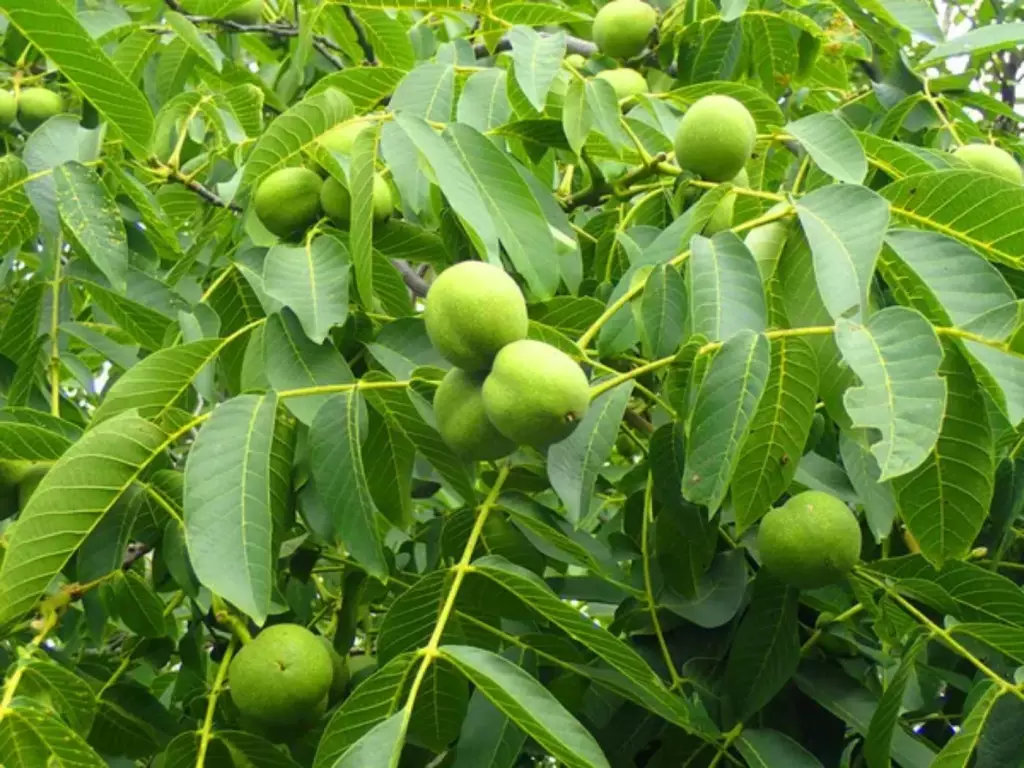
Juglans nigra is known for its durable, dark-colored heartwood
Known for its robust and dark wood, the American black walnut is a valuable hardwood species. Its nuts are less commonly eaten due to their tough shells but are still prized for their rich flavor.
-
Geographical distribution: Native to eastern North America, found in central and eastern USA, as far west as Texas and South Dakota.
-
Botanical characteristics: Known for its dark, ridged bark and large, compound leaves. The tree can grow up to 30–40 meters tall.
-
Unique features: The wood is highly valued for its durability, color, and grain, especially for furniture and veneers. The nuts are edible but have a bolder, earthier flavor than English walnuts.
Black walnut is the most valuable walnut tree
When assessing the value of walnut trees, the black walnut (Juglans nigra) stands out as the most valuable. It's prized for its high-quality, richly colored, and durable hardwood. If you have a mature black walnut tree, it might be quite a treasure.
Age & size matter
- Mature trees: Usually 25 years old
- Diameter at Breast Height (DBH): > 13 inches
Wood quality influences value
- Clear wood (free of defects)
- Straight grain
- Color consistency
The value is determined by various factors, including the size, health, and the market demand for lumber.
The wood of black walnut is used in fine furniture, veneer, and gunstocks, among other premium products. Depending on these attributes, a single mature tree can range significantly in value, often attracting prices from $1,000 to $10,000 or more.
Lumber prices also add to the tree's worth. Rates for black walnut lumber fluctuate between $8 to $18 per board foot. The final figure depends on whether the wood is rough-sawn or planed and its overall quality.
Black walnut is the most popular walnut tree
When you think about walnut trees, the Eastern Black Walnut (Juglans nigra) likely comes to mind. Renowned for its rich, flavorful nuts and beautiful hardwood, it's a favorite not only in North America but in various parts of the world.
The popularity of the black walnut tree is due to its versatility and the high demand for its wood and nuts.
You might have seen this tree in parks, large gardens, or rural landscapes due to its grand size and generous shade. It's also widely cultivated for its nuts considered a delicacy and a key ingredient in many recipes.
However, when planting your black walnut, be mindful as it produces chemicals that may inhibit the growth of surrounding plants. To avoid such situation, find out in this article the optimal number of black walnut trees to plant per acre.
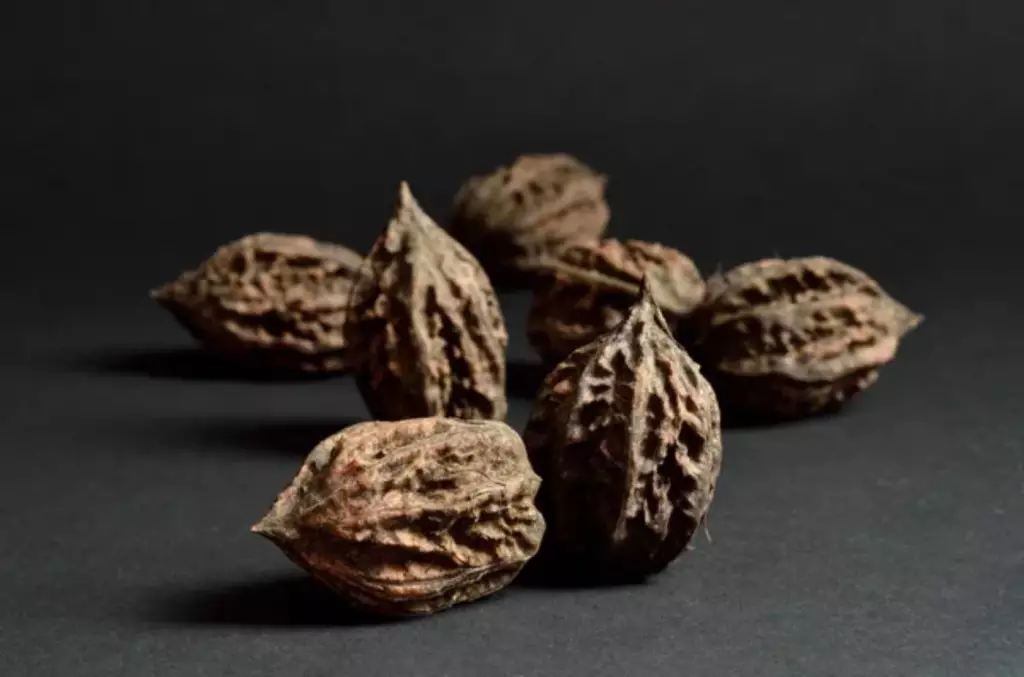
The Black walnut the largest walnut species
When you're scouting for the biggest walnut species, look no further than the black walnut (Juglans nigra).
Distinguished by its robust size, this native North American tree is renowned for both its valuable lumber and rich-tasting nuts.
Black walnut trees stand tall at an average height of around 65 to 100 feet. Some magnificent specimens even outstretch to 150 feet under optimal conditions.
You’ll recognize black walnut trees by their trunk diameter, which can span from 2 to 3 feet, making an impression with its deeply furrowed, dark-colored bark.
This species' vast canopy can spread widely too, providing ample shade with its large, pinnate leaves.
Here's a snapshot of the black walnut's attributes:
| Feature | Description |
|---|---|
| Height | 65-100 feet |
| Spread | Up to 50 feet |
| Trunk diameter | 2-3 feet |
Remember, while the black walnut is quite the giant, it's also a slow grower. It takes its time to reach maturity over many years.
Juglans cinerea produces sweet, richly flavored nuts
The butternut walnut, with lighter wood, provides creamy and rich nuts, especially in places like Michigan. This species, also known as white walnut, has softer wood that's easier to carve.
- Botanical characteristics: This species is a medium-sized tree with light gray bark and oblong, sticky nuts.
- Unique features: The nuts are sweet and oily, and the wood is softer than that of black walnut, often used for carving.
Juglans californica is highly adapted to the dry climates of California
Native to Southern California, the California black walnut is distinguished by its strong hardwood and has moderate water needs compared to other walnut species.
- Origin: Endemic to California, it is found in the southern and central parts of the state.
- Botanical characteristics: A small to medium-sized tree, often with a multi-stemmed trunk and broad crown.
- Unique features: It is adapted to the dry Californian climate and its nuts are an important food source for local wildlife.
Juglans hindsii serves as a rootstock for English walnut
Adapted to the Northern California region, this walnut species is known for its stately presence and is often used for grafting onto other walnut seedlings.
- Origin: Native to Northern California.
- Botanical characteristics: It is a large tree that can grow up to 15-20 meters tall with a broad crown.
- Unique features: The nuts are smaller and harder to crack than the English walnut. It is often used as a rootstock for English walnut cultivars.
Learn more about the Southern and Northern California walnut tree in this article.
Juglans ailantifolia is known for its large leaves
Boasting large, contoured leaves, the Japanese walnut produces nuts that are milder in taste and are enveloped in a thick shell.
- Origin: Native to Japan and Sakhalin in Russia.
- Botanical characteristics: This species often has a broad crown and can reach up to 20 meters in height. The leaves are large and pinnate with numerous leaflets.
- Unique features: The nuts are known for their unusual corrugated appearance and are usually not as highly regarded for eating due to their thick shells and mild-flavored kernels.
Juglans major thrives in the Southwestern United States
The Arizona black walnut is a resilient tree that thrives in the southwestern U.S. Its nuts are small and its wood is favored for its durability and beauty.
- Geographical distribution: Found in the southwestern United States and northwestern Mexico.
- Botanical characteristics: A medium-sized tree with a rounded crown, it has thick, dark bark and pinnate leaves.
- Unique features: The wood is hard and durable, and the nuts, though smaller than the English walnut, are edible.
Juglans mandshurica offers valuable wood and large nuts
The Manchurian walnut from East Asia is a hardy tree known for its cold resistance and valuable wood.
- Geographical distribution: Native to Eastern Asia, including the Russian Far East, China, Korea, and Japan.
- Botanical characteristics: It is a large tree that can reach up to 30 meters in height with a broad crown.
- Unique features: The wood is valued for its durability and is used for furniture and construction. The nuts are also edible.
Juglans neotropica is found in high-altitude forests
Growing in the Andean region of South America, this walnut species prefers high altitudes and produces wood that's sought after for furniture making.
- Geographical distribution: Found in the Andes from Colombia to Bolivia.
- Botanical characteristics: It is a tall tree, reaching up to 30 meters, with a straight trunk and a narrow crown.
- Unique features: The wood is dark and dense, and the nuts are small with thick shells.
Juglans cathayensis is prized for its nuts and beautiful wood grain
The Chinese walnut is recognized for its cold hardiness and produces nuts similar to those of the English walnut, making it an important cultivar in China.
- Origin: Native to China.
- Botanical characteristics: Similar to the English walnut but typically smaller in stature.
- Unique features: The nuts are valued for their distinctive flavor and are often used in traditional Chinese cuisine.
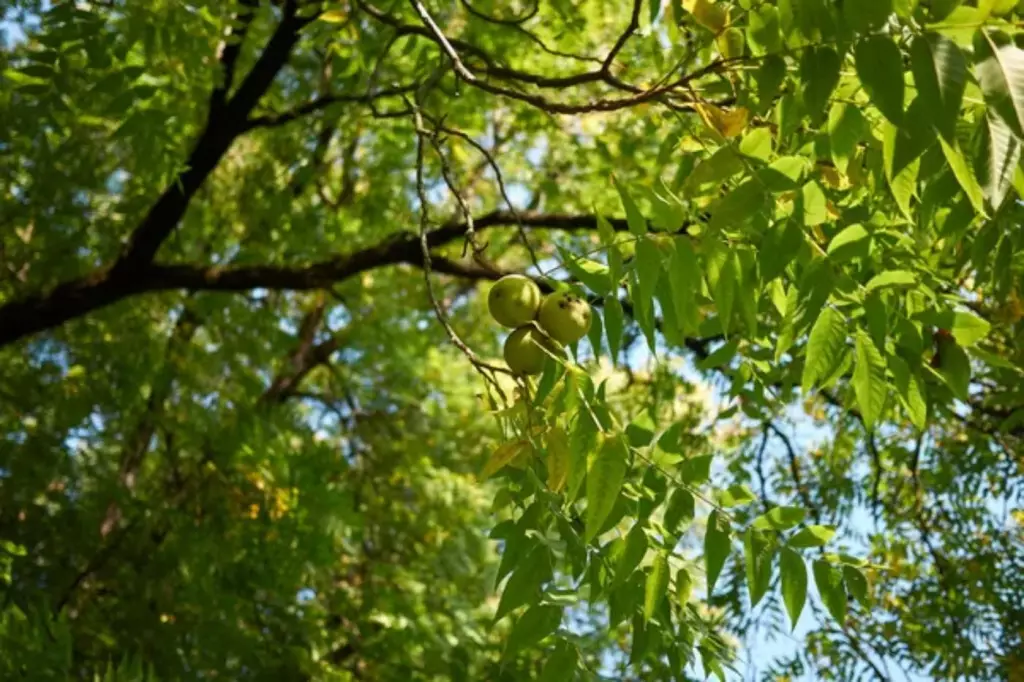
Juglans sigillata is known for its hard wood and resistance to disease
This species is robust with a very hard wood, hence the name iron walnut. It is found predominantly in China.
- Origin: This species is native to China.
- Botanical characteristics: It is a large tree that can grow to a significant height with a broad crown.
- Unique features: The wood is extremely hard and dense, hence the name "Iron walnut." The nuts are also edible.
Juglans hopeiensis is a rare walnut species
Hope walnut trees are a Chinese variety known for their cold tolerance, contributing to the diverse genetic pool of the walnut family.
- Geographical distribution: Endemic to the Hebei province of China.
- Botanical characteristics: Information on the botanical characteristics of this species is limited, but it is likely similar to other Juglans species in terms of having compound leaves and a stout trunk.
Juglans microcarpa thrives in dry environments
Smaller in size, the Texas black walnut, also known as little walnut, is native to the southwestern United States and Mexico, thriving in the arid climates there.
- Origin: Native to Texas and other parts of the southwestern United States and Mexico.
- Botanical characteristics: A small tree or large shrub, it has smaller leaves and nuts compared to the black walnut.
- Unique features: The nuts are small with a high-quality kernel but are not widely harvested due to their size.
Juglans australis is found in South American riverbanks and valleys
Grown in Argentina, the Argentine walnut adjusts to different soil types, showing the adaptability of walnut trees to various environments.
- Origin: Native to Argentina and Bolivia.
- Botanical characteristics: This species is a large tree with a wide crown and large leaves.
- Unique features: The nuts are edible, and the wood is used locally for various purposes.
Juglans boliviana is known for its unique adaptation to South American climates
This variety, found in Bolivia, adds to the remarkable diversity within the walnut species with its unique environmental adaptations.
- Origin: Found in Bolivia.
- Botanical characteristics: Shares characteristics with other Juglans species, such as pinnate leaves and a stout trunk.
- Unique features: There is limited information available on this species, but it is presumed to have edible nuts and usable wood.
Juglans jamaicensis adapts well to Caribbean climates
The climate of the Caribbean supports the growth of the West Indian walnut, highlighting the wide range of habitats walnut trees can occupy.
- Origin: Native to the West Indies and parts of Central America.
- Botanical characteristics: Typically a large tree with compound leaves.
- Unique features: The wood is valuable, and the nuts are edible, though this species is not as widely cultivated as others.
Juglans olanchana offers valuable wood in tropical forests.
The Central American walnut is native to the forests of Central America, adding to the expansive geographic spread of the walnut family.
- Origin: Native to Central America, with a range extending from Mexico to Honduras.
- Botanical characteristics: Juglans olanchana is a medium to large-sized tree with a straight trunk and a dense crown.
- Unique features: The species is valued for its hardwood and is also known for its edible nuts, although they are not as commonly consumed as those of other walnut species.
Juglans peruviana grows in the diverse ecosystems of Peru
The Peruvian walnut is another Andean species, notable for its high-altitude growth and distinct nut characteristics.
- Geographical distribution: This tree is indigenous to Peru.
- Botanical characteristics: It is a large tree that can reach considerable heights, similar to other members of the Juglans genus.
- Unique features: The wood is used locally for various applications, and the nuts are edible, though not as commercially significant as Juglans regia.
Juglans venezuelensis is native to Venezuela's diverse ecosystems
Thriving in the forests of Venezuela, this species exemplifies the walnut genus' presence across the Americas.
- Origin: Native to Venezuela.
- Botanical characteristics: Juglans venezuelensis is a tree that can grow to a large size, with a characteristic walnut appearance.
- Unique features: The tree is known for its wood and edible nuts, although it is not as widely cultivated as the more common walnut species.
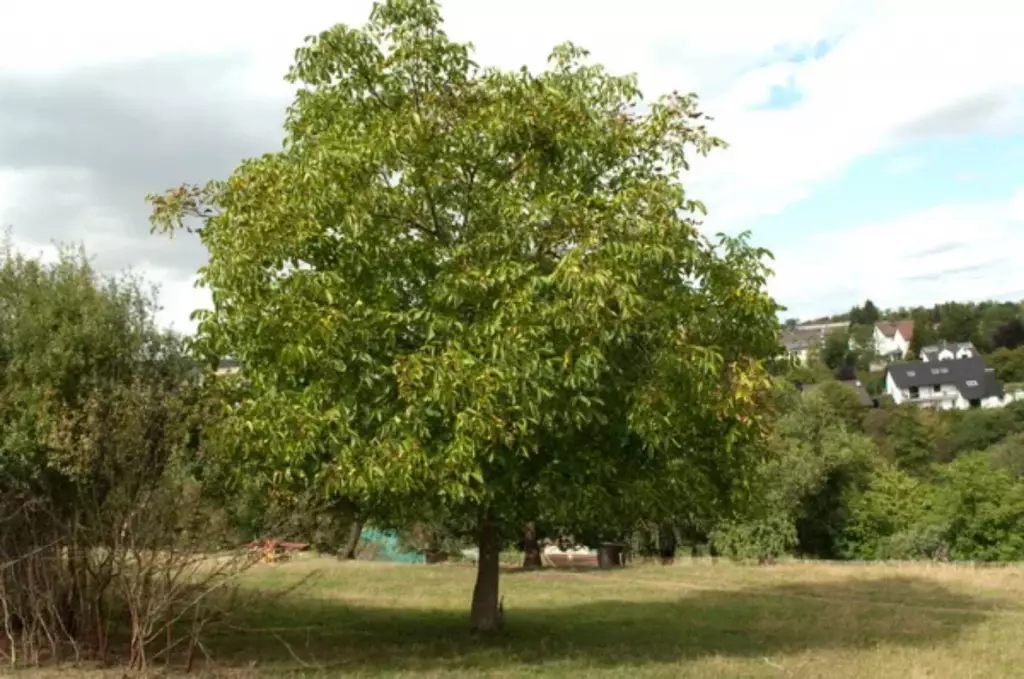
Juglans guatemalensis is known for its hard, decorative wood
Lastly, the Guatemala walnut stands as an example of the genus' adaptability and resilience, flourishing in the varied climates of Guatemala.
- Geographical distribution: This species is found in Guatemala and possibly other parts of Central America.
- Botanical characteristics: Juglans guatemalensis is a large tree with a broad crown and large, pinnate leaves.
- Unique features: The tree's wood is valuable, and the nuts are also edible, but the species is not extensively harvested.



